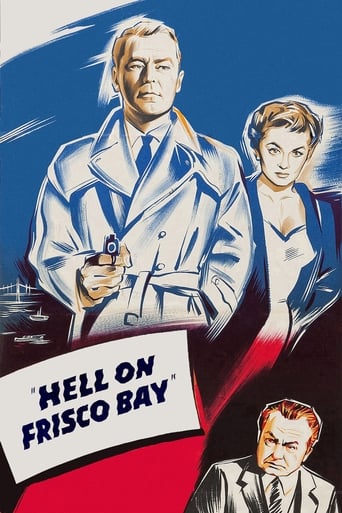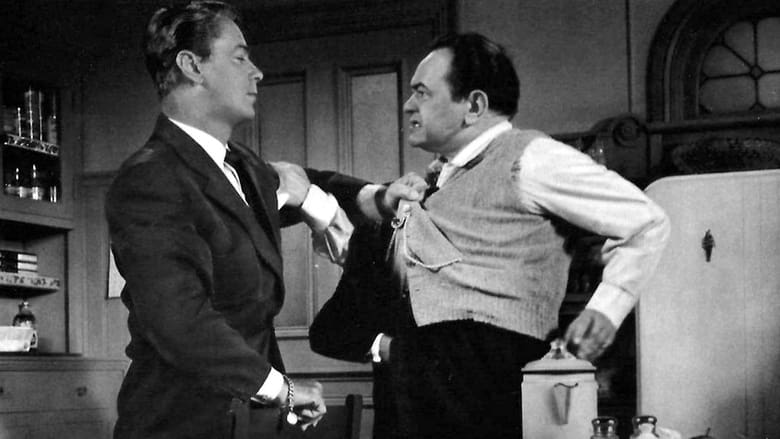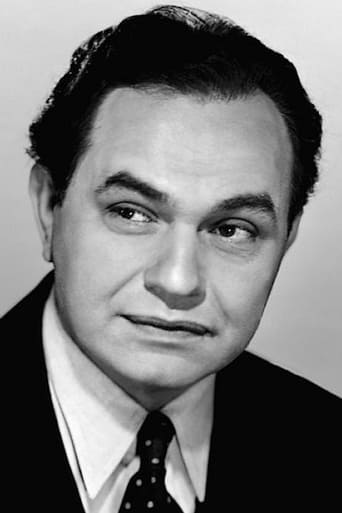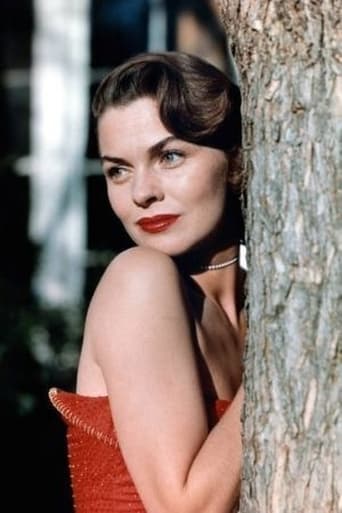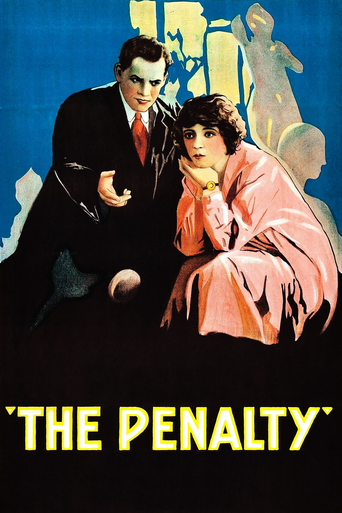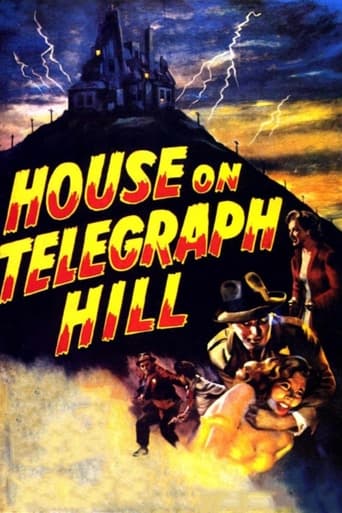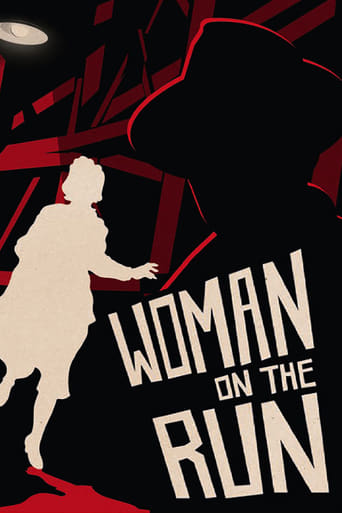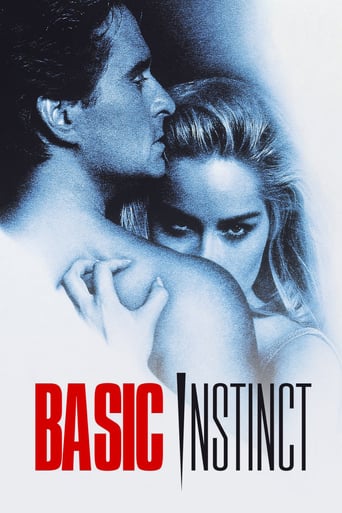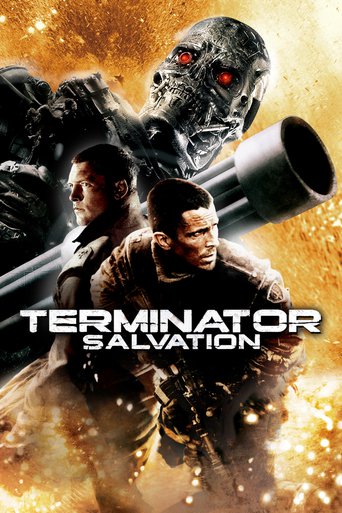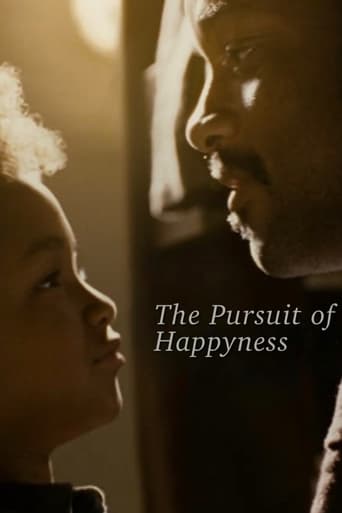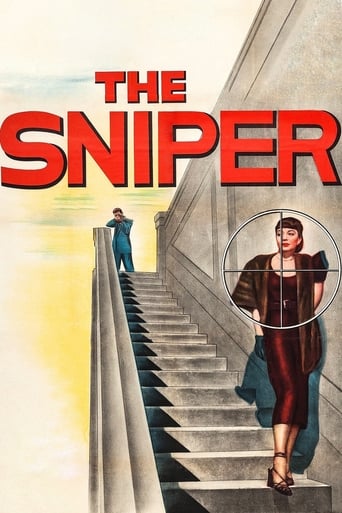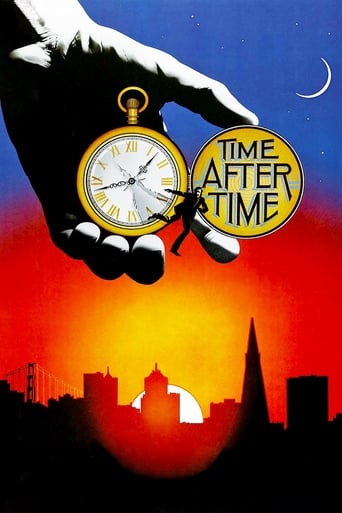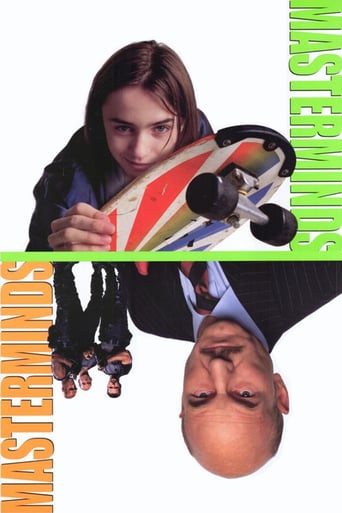Hell on Frisco Bay (1955)
A cop framed for a murder he did not commit hunts the San Francisco waterfront for the Mob racketeers who are responsible.
Watch Trailer
Free Trial Channels
Cast


Similar titles
Reviews
The first must-see film of the year.
Just intense enough to provide a much-needed diversion, just lightweight enough to make you forget about it soon after it’s over. It’s not exactly “good,” per se, but it does what it sets out to do in terms of putting us on edge, which makes it … successful?
Great story, amazing characters, superb action, enthralling cinematography. Yes, this is something I am glad I spent money on.
The movie turns out to be a little better than the average. Starting from a romantic formula often seen in the cinema, it ends in the most predictable (and somewhat bland) way.
Director: FRANK TUTTLE. Screenplay: Sydney Boehm, Martin Rackin. Based on the Collier's magazine serial, "The Darkest Hour", by William P. McGivern. Photographed in CinemaScope and Eastman Color by John F. Seitz. Film editor: Folmar Blangsted. Art director: John Beckman. Set decorator: William L. Kuehl. Make-up: Gordon Bau. Costumes: Moss Mabry. Music composed by Max Steiner, orchestrated by Murray Cutter. Assistant director: William Kissel. Sound recording: Charles B. Lang. Associate producer: George C. Berthelon. Producer: Alan Ladd. A Jaguar (Alan Ladd) Production, released through Warner Brothers Pictures. U.K. release: 28 May 1956. Sydney opening at the Plaza. 98 minutes.SYNOPSIS: After serving a five-year term for manslaughter, a wrongly convicted ex-cop goes after the waterfront gangster who was really responsible.COMMENT: Alan Ladd versus Edward G. Robinson, the posters promised, but, disappointingly, the screenplay keeps the two stars apart until the climax. In fact, Ladd and Robinson share only two scenes. For most of the movie, Robinson plays against Paul Stewart, and it is these two actors rather than producer Ladd, who provide the story's chief points of friction. Nonetheless, Robinson is always in his element and the script does come to a grand climax on San Francisco Bay in which CinemaScope is brilliantly utilized to round off the movie with maximum dramatic impact. In other respects, however, director Frank Tuttle's hand seems somewhat lethargic. The color photography suffers from the early CinemaScope disease of over-graininess, but rates as reasonably acceptable. Indeed, most audiences probably won't notice, especially in theaters with smaller screens. On the Plaza's huge screen, however, where I saw the movie, the color looked undeniably blotchy.
This film offers a lot of potential. The cast features Robinson and Ladd, the city in the background is a great one and the plot offers us murder, conspiracy, betrayal, infidelity and revenge. So why is it so very pedestrian from start to finish? I'm not totally sure as to the why but I have little doubt this is the case since the film really crawled across my screen, offering very little to make me sit up and take notice at any point. The problems for me are several but they are mostly intertwined to create one central problem which is that the film really lacks atmosphere and tension.The most obvious cause of this is the setting and the delivery. San Francisco is a beautiful city and one filled with coolness; it isn't the best backdrop for a tough noir-esque film. The film delivers the city in full color with lots of space and vibrancy and this doesn't help the tone of the film. This isn't to say that such a film can't be set in such a place, but if it does then it needs to create an atmosphere another way – setting it in gritty urban decay would have helped but it isn't necessary if ou deliver with plot, performances and other ways to make atmosphere. Sadly this film doesn't. In terms of characters they are flat and the performances match this. Ladd is supposed to be bitter and driven by rage but never looks more annoyed than someone who has misplaced their car keys. He really sleeps through this and even in the "dramatic" conclusion, his face is more emotionless than Steven Seagal. Robinson does his thing but without anything much to work with, so he is only his usual style, nothing special. The rest of the cast have some good turns but generally the pace is set by the leads – and the pace is slow.This really hurts the atmosphere and I never felt anything other than a general plod through a plot which didn't have anything to it. The bright color and space of the film doesn't help, but the lackluster performances and lack of general tension or atmosphere do more damage again.
A film noir shot in colour, in cinemascope, with scenes set mostly outdoors during daylight hours, and making ample use of San Francisco's picturesque landscape, starts out with several counts against it.But contravention of most if not all of the conventions of the noir genre is the least of this movie's problems.The biggest drag on the story is its star. Alan Ladd strolls through the plot like a Californian Redwood on legs. If it weren't a clash of materials, it would not be unfair to characterise his woodenness as robotic. There's not an ounce of enthusiasm or conviction in his performance as Steve Rollins, an ex-cop wrongly convicted of manslaughter, who leaves jail vowing vengeance on the gangsters who framed him.Ridiculously attired in a linen suit that never creases or stains despite several bare knuckle dust ups, he fearlessly provokes corrupt waterfront boss Victor Amato (Edward G Robinson) into a showdown that can only result in death or victory.Along the way, just to demonstrate what a straight-up, honorable guy he is, Rollins rebuffs his wife (Joanne Dru) for a moment of weakness while he was in jail (but only after he'd refused to let her visit him for three years) and comes to the aid of a nightclub singer (Fay Wray) whose life Amato is threatening. All of which Ladd achieves without once moving a facial muscle.So thank god for Edward G.Robinson! He singlehandedly saves HELL ON FRISCO BAY with a performance that is considerably better than the film deserves. Robinson's career was in a slump in 1955, mostly as a result of the anti-communist blacklist, and he was no longer getting A-list parts, but he never stopped giving his best to whatever work came his way. He's as great here as he was in 'Little Caesar' and 'Key Largo.' His Victor Amato is a fully-rounded, believable and disturbing character, a psychopath who can charm the parish priest one moment and order the murder of his own nephew the next. When Robinson's on screen it's almost possible to forget he's inhabiting the same story as dreary lifeless Alan Ladd.Credit is also due to Paul Stewart who makes the most of his underwritten part as Amato's put-upon right hand man, and watch out for an uncredited but instantly recognisable Jayne Mansfield in her last bit part before exploding into America's consciousness with 'The Girl Can't Help It' a few months later.HELL ON FRISCO BAY is a decidedly mediocre tale but a fine example of an actor proving himself better than the material he's given to work with. Watch this and you may well be put off Alan Ladd for life but you'll definitely want another serving of the wonderful Edward G Robinson.Read more of my reviews at http://thefilmivejustseen.blogspot.com/
The original title for "Hell on Frisco Bay" was "Hell on the Docks." Apparently, either Warner Bros. or Alan Ladd, whose company, Jaguar, produced the film, thought the title wasn't colorful enough or specific enough about its location, so "Frisco Bay" was substituted just prior to the film's release. I have a few stills with the original title printed on them.This film, like others produced by Ladd in the 1950s, including Delmer Daves' Western, "Drum Beat," has not appeared on DVD because, according to a Warner Bros Archives Edition executive, the Ladd estate has not permitted its release."Drum Beat" just appeared on Turner Classic Movies in its original CinemaScope format, but it was shorter than its published length of 111 minutes by at least four minutes. No US DVD release is imminent.

